The Smithsonian’s Ten Splashiest New Acquisitions of 2019
This year marks the arrival of a brilliant diamond, a hybrid space rocket, exciting paintings and two darling clouded leopard cubs
/https://tf-cmsv2-smithsonianmag-media.s3.amazonaws.com/filer/d3/40/d340582a-a13b-40d7-a351-8e7d33141862/clouded_leopards.jpg)
If the Smithsonian really is the Nation’s Attic, as it is sometimes called, it might require a new room or two up there. Another year of acquisitions for its 19 museums and galleries, along with the National Zoo, has added to its already massive collections.
Choosing ten standout new acquisitions may mean snubbing some of the largest new additions. A nearly 30-ton carcass of a whale was undoubtedly the smelliest acquisition of 2019. And while the National Zoo waved bye bye to its beloved Giant Panda Bei Bei, other Smithsonian museums seemed to make up for the great loss. More than 120 portraits, including such renowned subjects as George Takei, Lillian Vernon, Pablo Casals and Dolores Del Rio, arrived at the National Portrait Gallery. Collectors Chuck and Pat McLure gifted 145 intricately woven Wounaan and Emberra baskets to the National Museum of the American Indian. The National Postal Museum accepted into its collections a delightfully illustrated letter from master glass artist Dale Chiluly that was sent to the Stephanie Stebich, the director of the Smithsonian American Art Museum. And then there were the 1950s watercolors of superstar Japanese artist Yayoi Kusama that weren’t exactly new acquisitions—they were recently found in the American Art Museum’s Joseph Cornell Study Center.
Clearly, the variety of acquisitions suited the varied approaches of museums that are just as varied in reflecting the riches of the nation, and the world. Our choice of notable standouts are:
1. A Fierce, Flashy Diamond
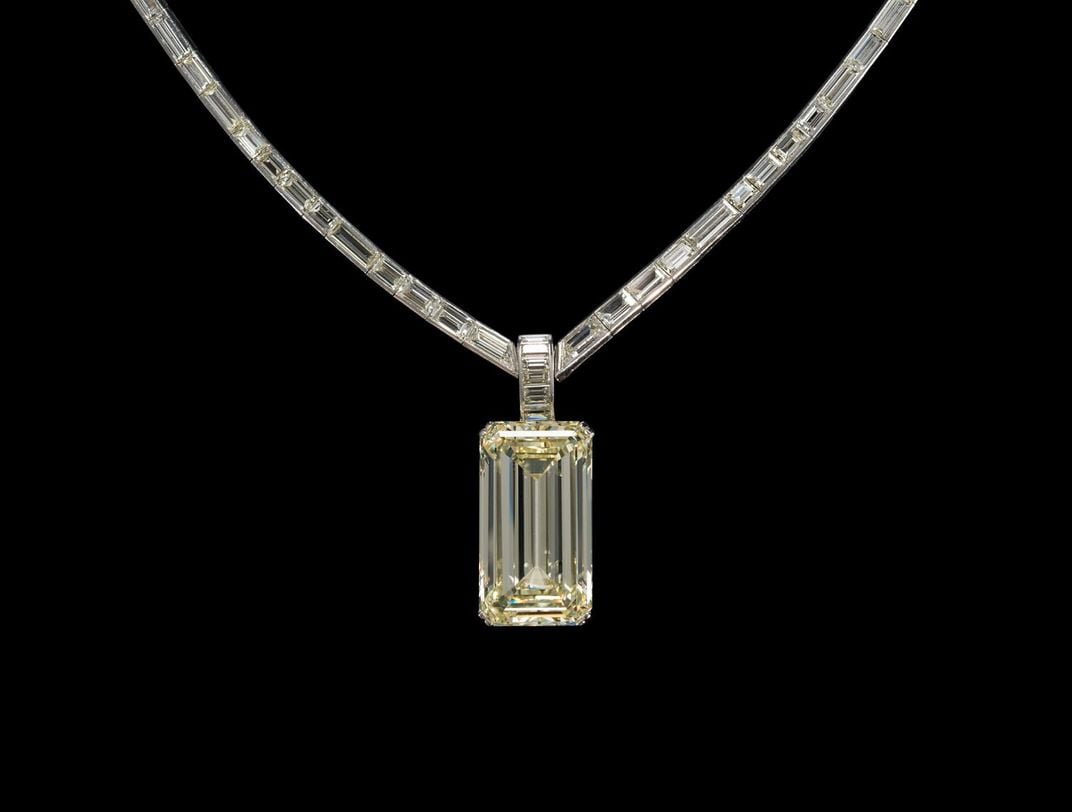
Hanging not far from the 45.52 carat Hope Diamond that has long attracted lines at the National Museum of Natural History is the museum’s newest glittering gem—the 55.08-carat Kimberley Diamond. The fancy yellow diamond, a gift from philanthropist Bruce Stuart, is hailed as “one of the world’s great gemstones,” by National Gem Collection curator Jeff Post, who dubs it “a true icon.” The elegant, elongated emerald-cut diamond came from a 490-carat crystal found in the Kimberley mining region of South Africa in about 1940. Set into its current platinum necklace adorned with 80 baguette-cut diamonds weighing more than 20 carats, the Kimberley Diamond became one of the most recognizable diamonds in the world, even getting cameo appearances in TV shows like “It Takes a Thief” and “Ironside.”
2. A Billionare Hyper-Realized
/https://tf-cmsv2-smithsonianmag-media.s3.amazonaws.com/filer/b8/5f/b85f3ab4-894b-4077-997f-f0d00782bfe3/pa_npg_19_215-bezos-r.jpg)
The newly unveiled rendering of Jeffrey P. Bezos by Robert McCurdy, commissioned by the National Portrait Gallery, is so realistic it has a velvet rope in front of it, lest visitors be tempted to touch, poke or maybe borrow a few grand from the Amazon founder who is also one of the richest men in the world. McCurdy, known for his hyperrealist work, spent 18 months on the painting, whose reference was a photograph. As lifelike as it looks, the portrait is literally larger than life, proven when the subject posed with it during a ceremony in November. “He’s really honored to have his portrait here,” says museum director Kim Sajet. It is one of 19 portraits of famous figures from Lin-Manuel Miranda to Anna Wintour featured in a "Recent Acquisitions" show at the Portrait Gallery running through August 30, 2020.
3. A D-Day Flag From a Grateful Nation
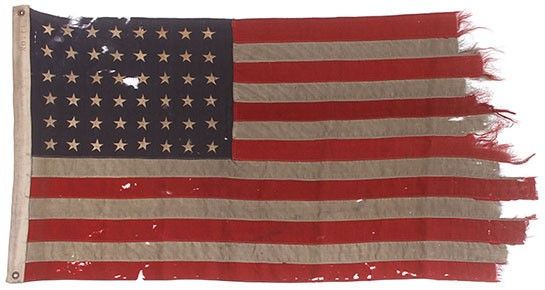
The 75th anniversary of D-Day, the massive Allied operation that was the turning point of World War II, was marked in part by the addition of a tattered American flag to the National Museum of American History, given by a pair of Dutch collectors in appreciation for the efforts of U.S. troops. The 30-by-57-inch, 48-star flag, discolored from dirt and diesel exhaust, flew over one of the landing crafts off Utah Beach in Normandy, France. It has at least one symmetrical hole that appears to have come from German machine-gun fire. It was presented to the Smithsonian during a July ceremony at the White House following a meeting between the U.S. president and the Netherlands prime minister. “It’s a great honor to be entrusted with this flag and share it with the American people,” says museum director Anthea M. Hartig. It joins other museum objects commemorating the anniversary of D-Day in an ongoing display.
4. A Cache of Cultural Icons
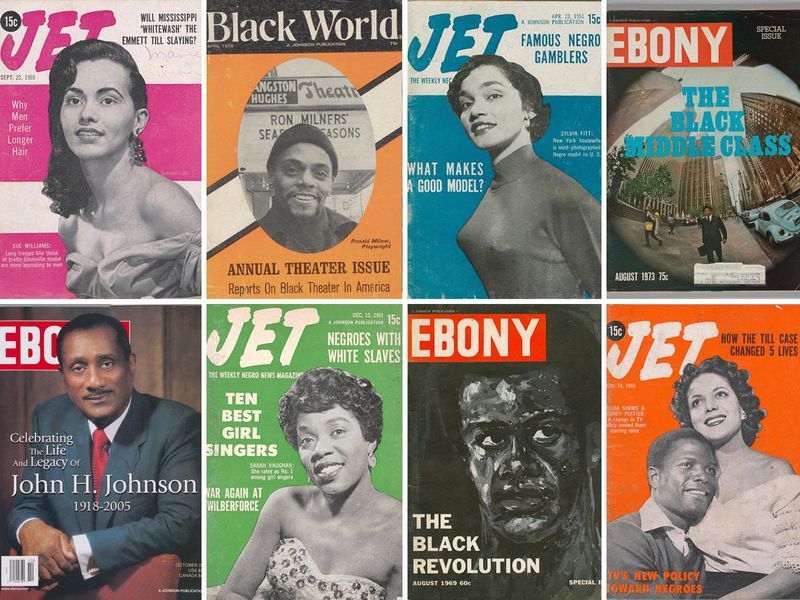
The visual depth of the Smithsonian’s National Museum of African American History and Culture will be greatly enhanced by the 2019 purchase of the photo archive of Ebony and Jet magazines that became available when Johnson Publishing went bankrupt. Political and cultural icons from the African American community abound in the 4 million images, including Martin Luther King, Aretha Franklin and Muhammad Ali, as well as landmark photographs such as the shocking view of the mutilated body of Emmett Till in his coffin. “The archive is a national treasure and one of tremendous importance to the telling of black history in America,” says Darren Walker of the Ford Foundation, which joined forces with the Andrew W. Mellon and John D. and Catherine T. MacArthur foundations and the J. Paul Getty Trust to purchase the archive for $30 million.
5. A Renaissance Masterwork
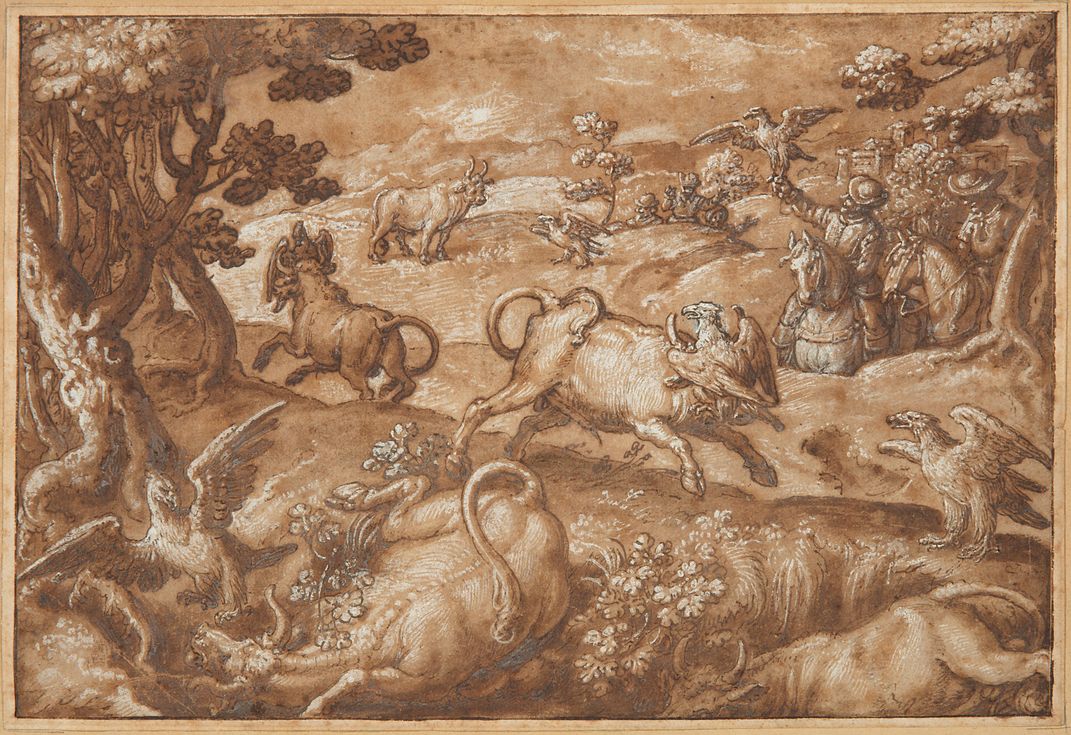
The oldest piece of art acquired by the Smithsonian in 2019 may be a Renaissance-era drawing, Men Hunting Bulls with Falcons by Jan van der Straet (1523-1605). It’s one of a series of hunting scenes by the Flemish court artist to the Medici, who was better known as Stradanus. The Cooper Hewitt, Smithsonian Design Museum, was already a center for the study of Stradanus with more than 300 drawings archived. Among its holdings was a preparatory sketch for the newly acquired finished drawing—one of the thousands of sketches purchased for the collection by museum founders Sarah and Eleanor Hewitt. Reuniting the finished drawing with the preliminary sketch “not only illustrates the function of the preliminary sketches, but more broadly illustrates the essential role played by drawing in the practice of design,” says Julia Siemon, assistant curator of drawings, prints & graphic design at Cooper Hewitt.
6. A Modern Masterwork

White Environ #5 by George Morrison, is a 1967 abstract painting from a respected New York abstract expressionist whose peers were Franz Kline and Willem de Kooning. It was purchased by the National Museum of American Indian because the artist was one of the first natives to shine in those circles. A Grand Portage Chippewa from Minnesota, whose native name was Wah Wah The Go Nay Ga Bo (or Standing in the Northern Lights), Morrison thought of himself as an artist who happened to be a Native American. Freed from the expectations of tribal art, he became an influence for generations after him through his both work and through teaching. The acquisition is currently in a group show, “Stretching the Canvas: Eight Decades of Native Painting” at the museum’s Heye Center in New York City on view through fall 2021.
7. A New Age RocketMotor
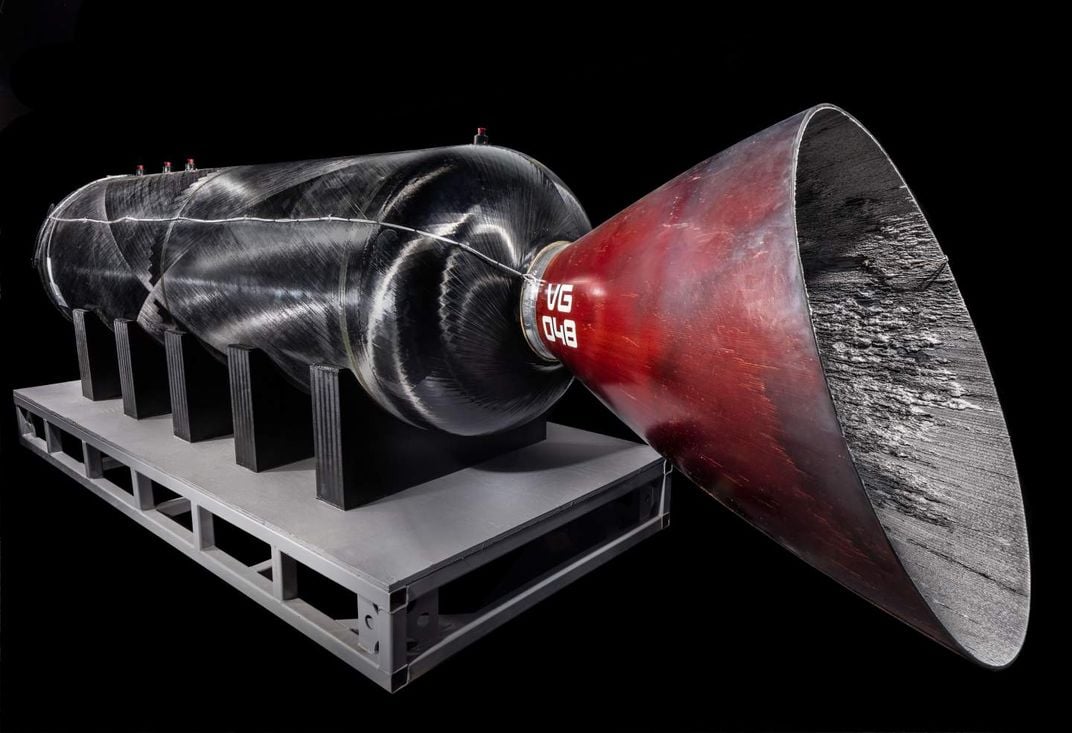
The big rockets at the National Air and Space Museum have generally been those provided by NASA. But the museum this year acquired RocketMotorTwo, the hybrid engine that powered the privately-funded Virgin Galactic’s SpaceShipTwo, called VSS Unity—its venture into commercial spaceflight. First sent into space December 13, 2018, it joins Virgin Galactic’s SpaceShipOne in the collection. “It is a unique piece of history that represents a new era in space travel,” says museum director Ellen Stofan. The engine will be displayed in the “Future of Spaceflight” exhibition scheduled to open in 2024 as part of the museum’s seven-year renovation. Until then, the public can view it at the museum’s Udvar-Hazy Center in Chantilly, Virginia.
8. A Rainbow of Color
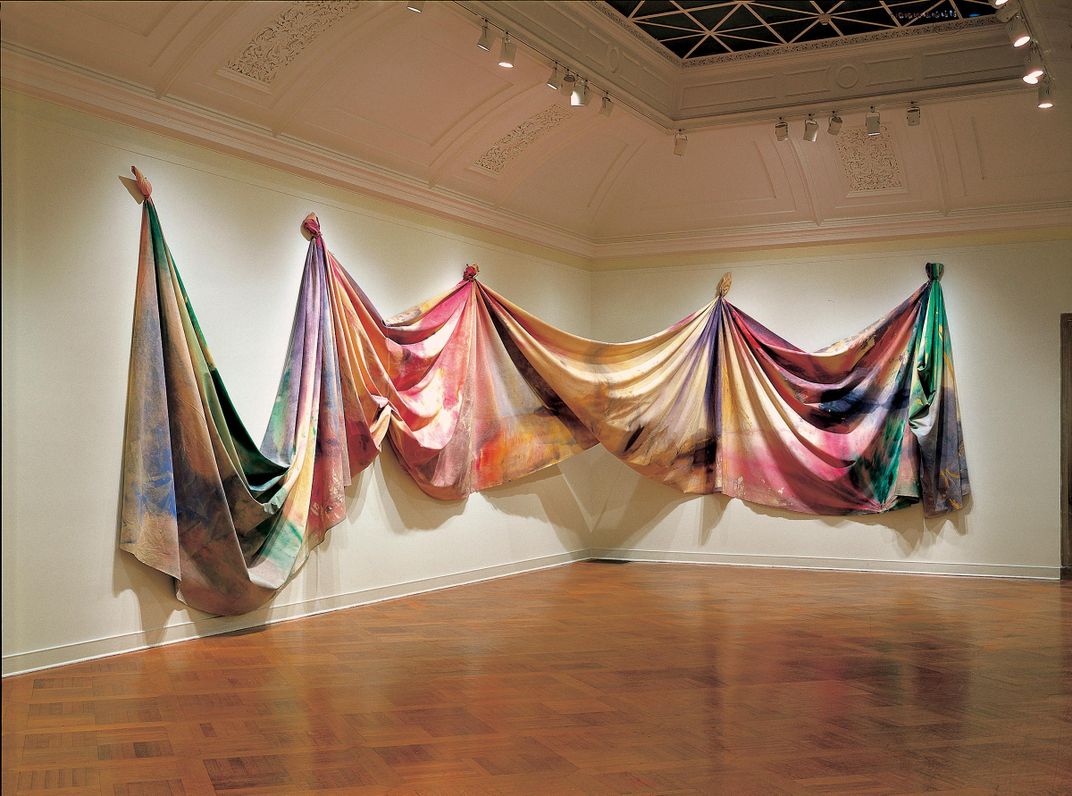
There is a bit of local pride in the addition at the Hirshhorn Museum and Sculpture Garden of two works by a leading figure in the Washington Color School artist whose hallmark Light Depth by Sam Gilliam, a sprawling, 10-by 75-foot-long piece of stained, unstretched canvas, was commissioned by the Corcoran Gallery of Art upon the occasion of its 1969 centennial as one of the first fine art galleries in the country. When the Corcoran closed in 2014, its 17,000 works went under the care of the National Gallery of Art, to be distributed to peer institutions. The Hirshhorn received more than two dozen major works from the collection in 2019 including Light Depth, and a later Gilliam work, 1994’s Level One. The 50-year-old work by Gilliam, the Mississippi artist who at 83 is one of the District’s most significant artists, is meant to change upon each installation, and will likely do so in its new locale.
9. Two Darling Cubs
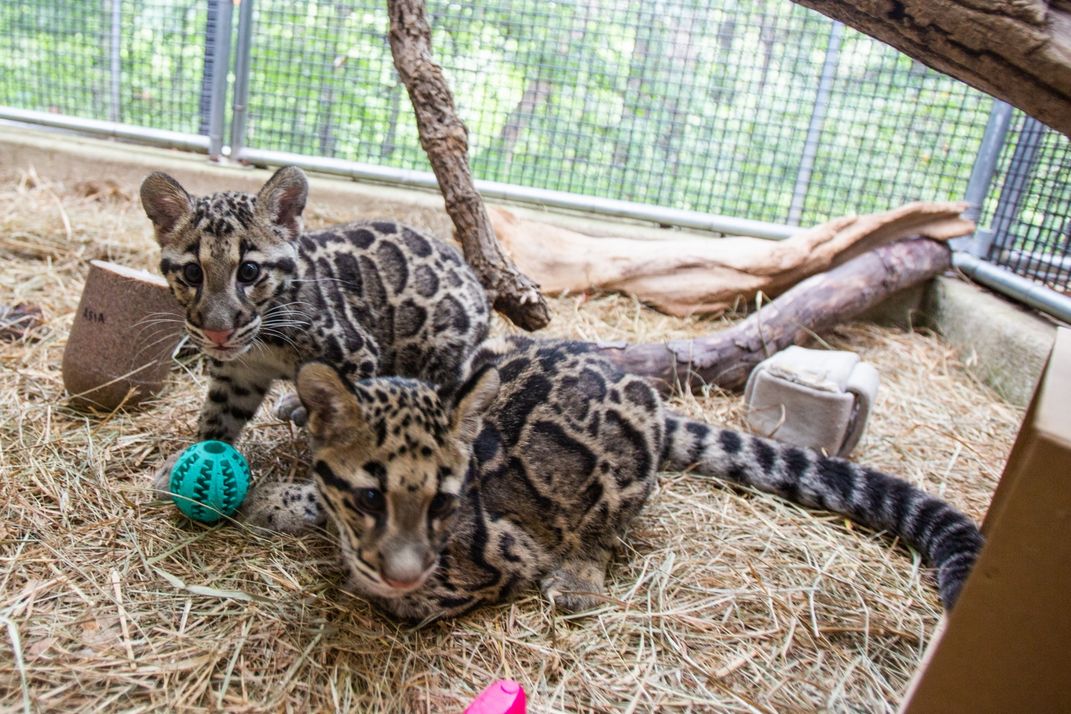
Acquisition seems like a cold word to use for new additions at the Smithsonian’s National Zoological Park. Especially when considering the rare clouded leopard—the first at the Zoo—who made their debut there in September. Let’s instead call them new residents. The National Zoo has had adult clouded leopards since 2006. But Paitoon and Jillian, born last spring at the Nashville Zoo, are the first cubs. For decades, scientists at the Smithsonian Conservation Biology Institute have been studying behavior of clouded leopards. The wild cats from the Himalayan foothills are found through mainland Southeast Asia into southern China. They are listed as vulnerable in the wild by the International Union of Conservation of Nature, which estimated that there are about 10,000 clouded leopards in the wild.
10. Butts (Cigarettes) and Toilet Paper
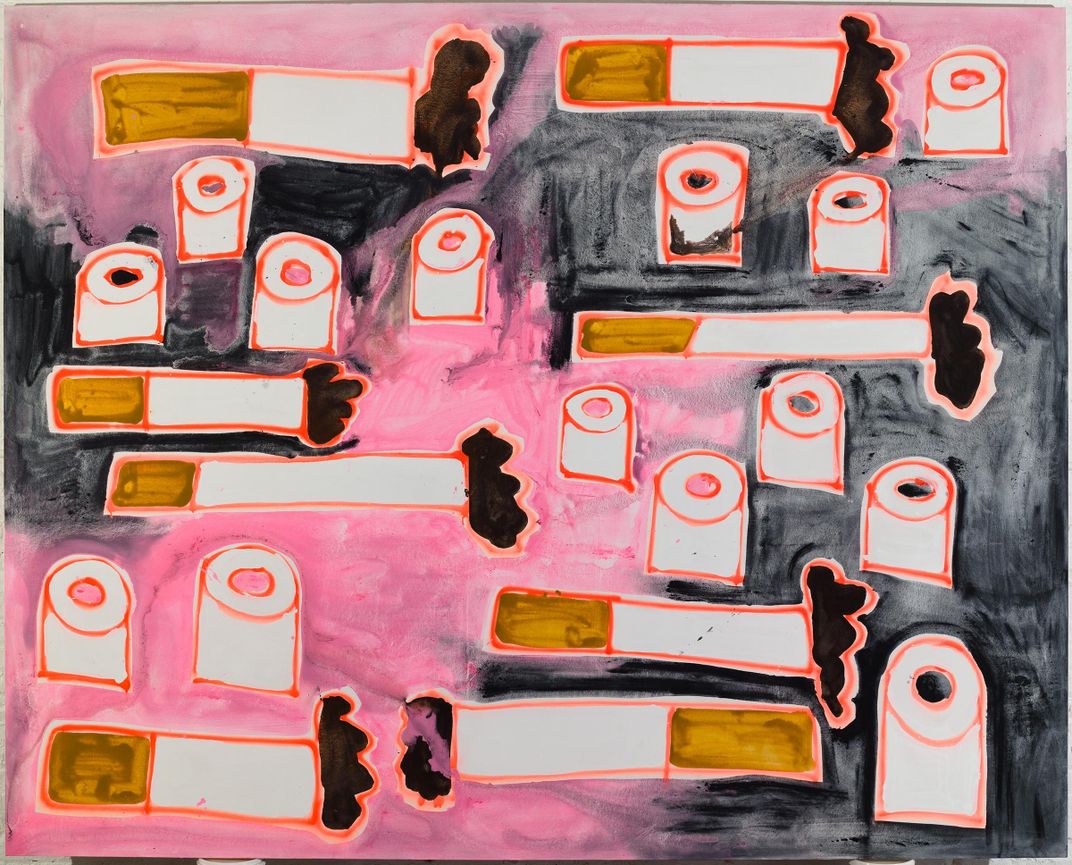
The bright and splashy Toilet paper and cigarettes black and pink by Katherine Bernhardt is part of a current recent acquisitions show at the Hirshhorn Museum and Sculpture Garden. And the work by the Brooklyn artist is an arrangement of just that: Eight giant butts and 14 rolls across an 8-by 10-foot canvas. Born in 1975 in Missouri, Bernhardt, christened “the so-called female bad-boy of contemporary art,” has only been exhibiting her vivid paintings this century. Her other unexpected subject matter includes Nike swoops and Pink Panther profiles. Toilet paper… is currently on display as part of a show titled “Feel the Sun in Your Mouth: Recent Acquisitions,” named after a phrase used in the French artist Laure Prouvost’s video, Swallow, also new to the collections.
/https://tf-cmsv2-smithsonianmag-media.s3.amazonaws.com/accounts/headshot/RogerCatlin_thumbnail.png)
/https://tf-cmsv2-smithsonianmag-media.s3.amazonaws.com/accounts/headshot/RogerCatlin_thumbnail.png)